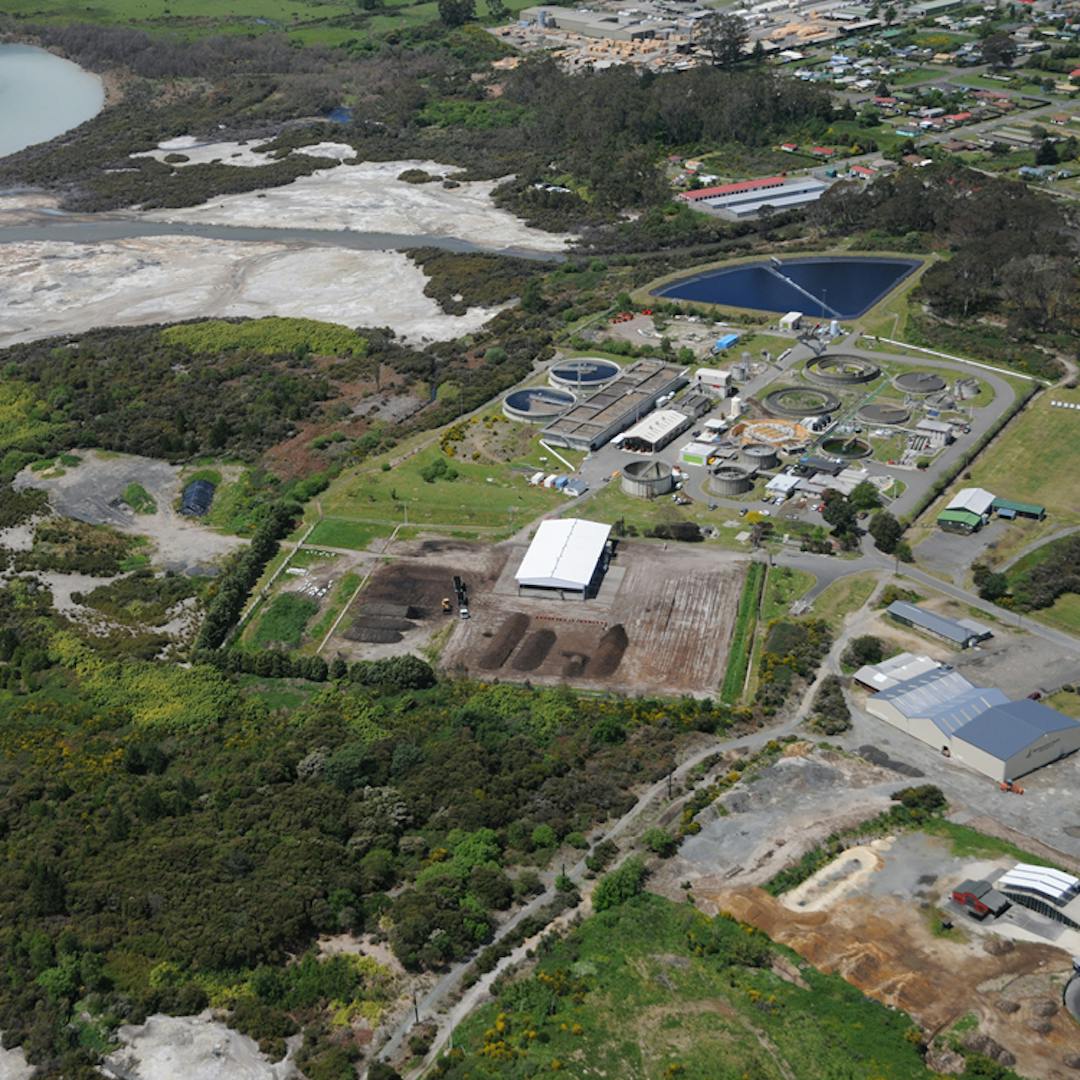Current consent to spray in forest runs out 31 July 2021 - RLC requires a “Bridging Consent” to continue current system for up to 5 years
In the forest the changes you may notice are....
Minimal noticeable changes to the current practice within the existing forest spray blocks. However, the spray area has been slightly reduced to provide a great distance between forest users. This is mainly around roads and tracks in the forest.
The ‘Black Track’ will be re-aligned in some areas.
At the wastewater treatment plant we will be...
Upgrading the treatment wastewater to even higher standard and increasing its capacity to take into account future growth and climate change.
In the Whakarewarewa Forest we will be...
Developing future discharge area, called the Sustainable Forest Approach, with CNI, TALT and Mana Whenua that will be of significantly smaller and culturally appropriate as a short/medium term solution while options are further investigated to withdraw from the forest
Currently, treated wastewater from Rotorua's wastewater treatment plant is discharged into the Whakarewarewa Forest via a spray irrigation system
- 19 to 20,000 cubic metres of treated wastewater per day
- Sprayed over a number of irrigation blocks with approximate area of 400 hectares
- Blocks are sprayed for 2 to 3 hours per day
- Contains total 40 tonnes Nitrogen per year
- Contains 19 tonnes Phosphorous per year
- Contains pathogens (E-coli bacteria and viruses)
A map of the current spray irrigation system is here
Current waster water discharge background and summary here
Rotorua’s current plant has to date been the most successful initiative in reducing nitrogen going into Lake Rotorua. Our treatment plant is among the best in the country, treating wastewater to a very high standard. But it is in need for an upgrade to meet higher projected demand and to continue to reduce and maintain nutrient levels below the targets agreed under the Lakes Water Quality programme.
The plant receives about 20 million litres of wastewater daily and has a current capacity of 27 million litres.
Most wastewater going through the plant for treatment is from domestic use, with a small percentage from industrial use.
Our wastewater includes rain water, sediment, sewage, industrial wastewater and stormwater.
The treatment plant is sited on the eastern edge of Lake Rotorua in the Sanatorium Reserve - a reserve gifted by Ngāti Whakaue for public purposes under the 1880 Fenton Agreement. The plant uses a combination of a 5-stage Bardenpho process and Membrane Bioreactor, the first full biological nitrogen and phosphorus process used for municipal wastewater in New Zealand.
To protect the quality of the water in Lake Rotorua, the treated effluent from the plant is currently irrigated to pass through CNI land in Whakarewarewa Forest before the groundwater discharges to Lake Rotorua.

Our current wastewater treatment plant:
- Sited on eastern edge of Lake Rotorua in Sanatorium Reserve - Reserve gifted by Ngāti Whakaue for public purposes under 1880 Fenton Agreement
- Deconstructs wastewater including domestic sewage, rain, sediment, industrial wastewater & some storm water
- Deals with about 20 million litres of wastewater per day
-
Wai tātari (treated wastewater) is pumped to Whakarewarewa Forest for discharge via a land spray system
- Best in NZ at removing nitrogen, but recovered water is still high in phosphorous and pathogens
Council has operated a Land Treatment System (LTS) in Whakarewarewa Forest for the discharge of wai tātari from the Rotorua city wastewater treatment plant (WWTP) since 1991.
Wai tātari is sprayed in the forest and seeps through land in the Puarenga Catchment before ultimately discharging into Te Rotoruanui-a-Kahumatamomoe (Lake Rotorua).
Whakarewarewa Forest is owned by CNI Iwi Holdings Limited (CNI) on behalf of the Central North Island Iwi, being: Ngāi Tūhoe; Ngāti Tuwharetoa; Ngāti Whakaue; Ngāti Whare; Ngāti Manawa; Ngāti Rangitihi; Raukawa; and The Affiliate Te Arawa Iwi and Hapū.
RLC acknowledges that the use of land within Whakarewarewa Forest for the spray system is not consistent with its status as a taonga or the relationship of iwi and hapū with their taonga.
In addition to the cultural effects, nitrogen levels in the treated wastewater discharging through the Puarenga Catchment resulted in an abatement notice. An appeal against that notice was settled by a consent order issued by the Court, requiring RLC to investigate viable alternatives for the discharge of wai tātari from the treatment plant.
Council agreed to move out of the forest by 2019 and the proposal to upgrade the treatment plan and discharge treated wastewater to Arikiroa/Sanitorium Reserve via a culturally designed land contact bed followed several years of engagement, led by a project steering committee.
There was significant iwi and community opposition to the proposal regarding discharge to Arikiroa and a new agreement, Kawenata - Puarenga Catchment of Te Rotoruanui-a-Kahumatamomoe, has now been reached between Rotorua Lakes Council, CNI Iwi Holdings and Te Arawa Lakes Trust.
The kawenata reflects the parties’ commitment to work together towards a new long-term solution for discharge of wai tātari (recovered wastewater), and outlines a process to design and develop a Sustainable Forest Approach (SFA).
This includes upgrading Council’s wastewater treatment plant and use of a set area of land within Whakarewarewa Forest, while the parties continue working towards a long-term solution that will not include use of the forest land.




